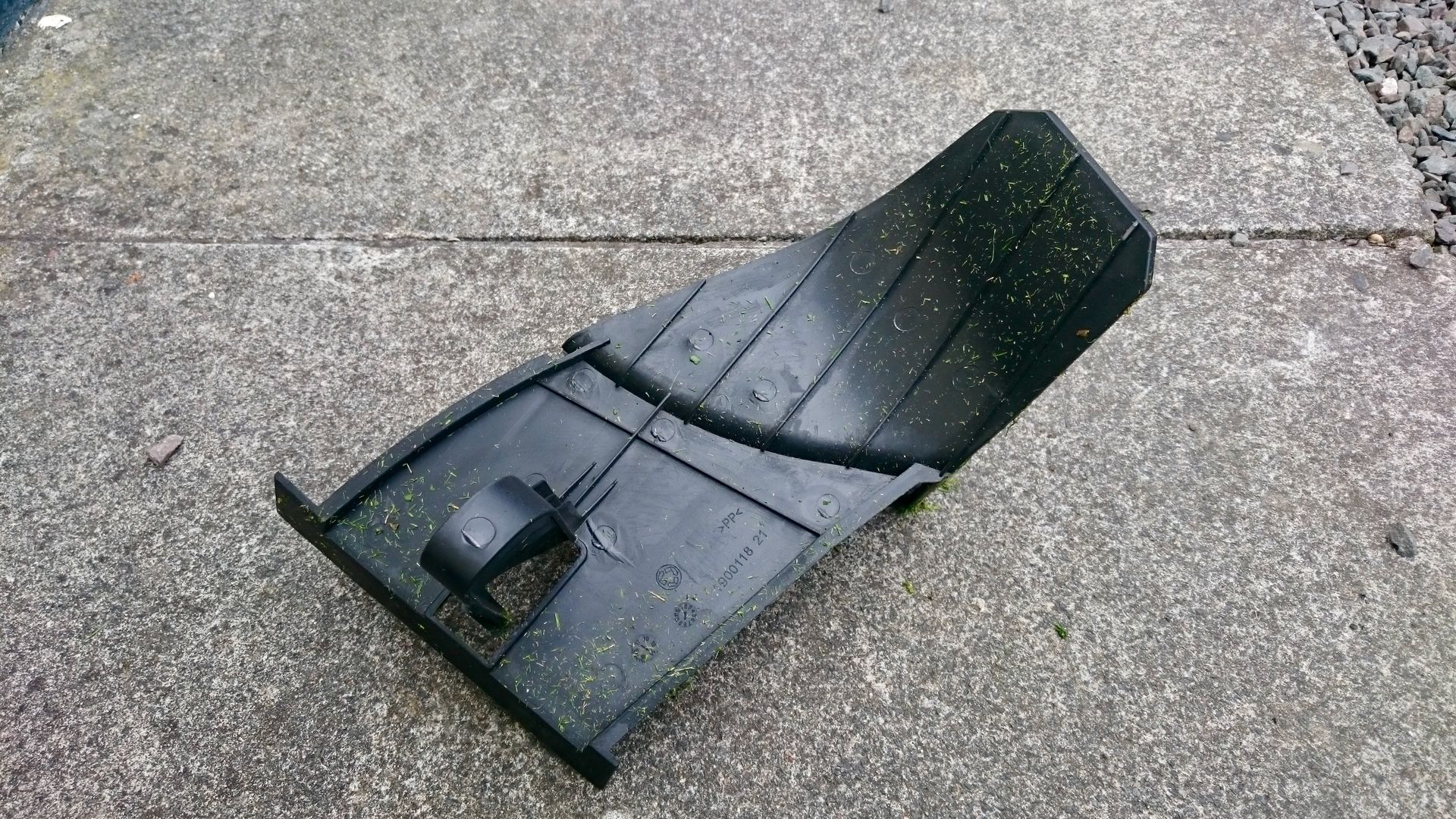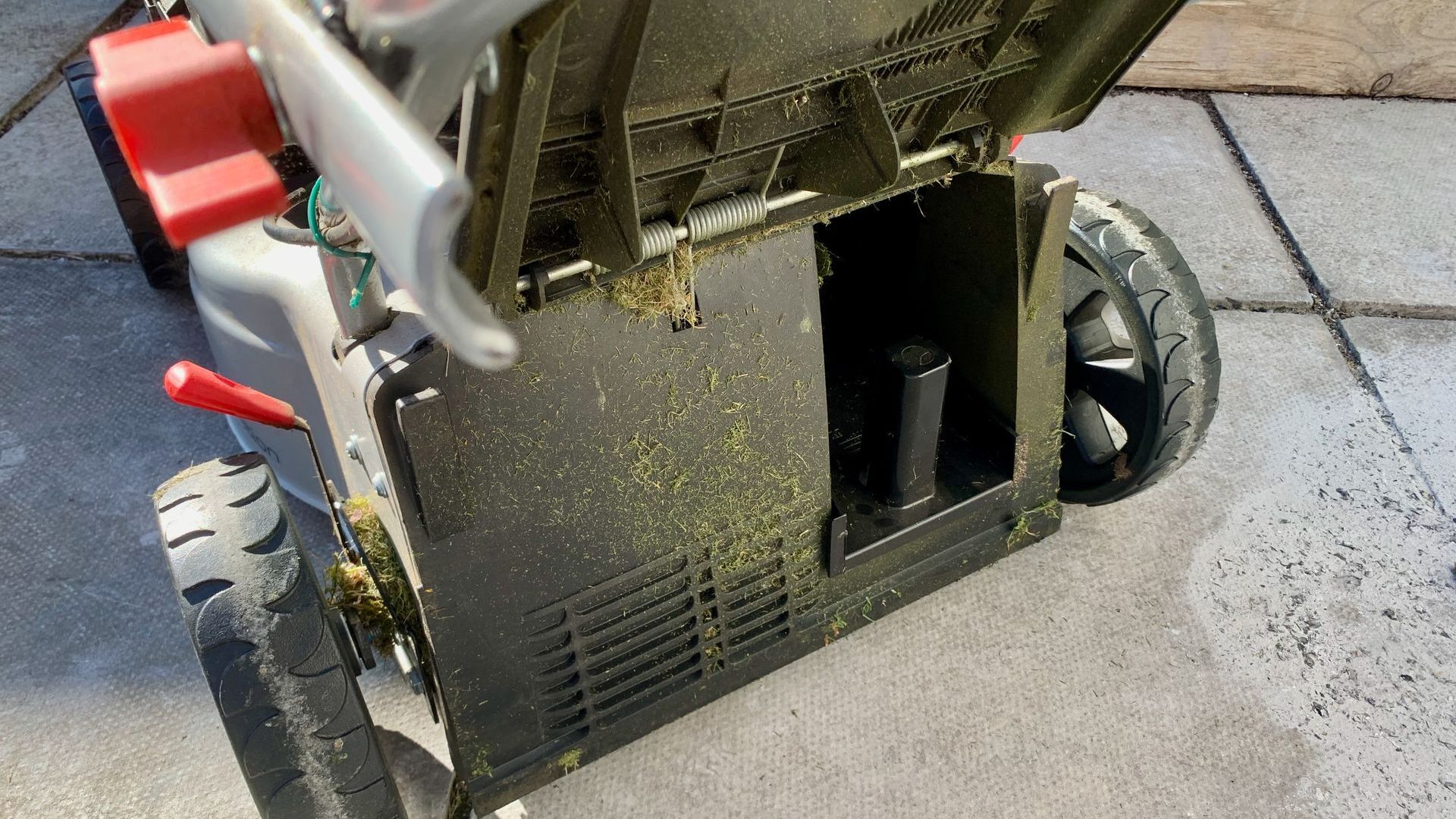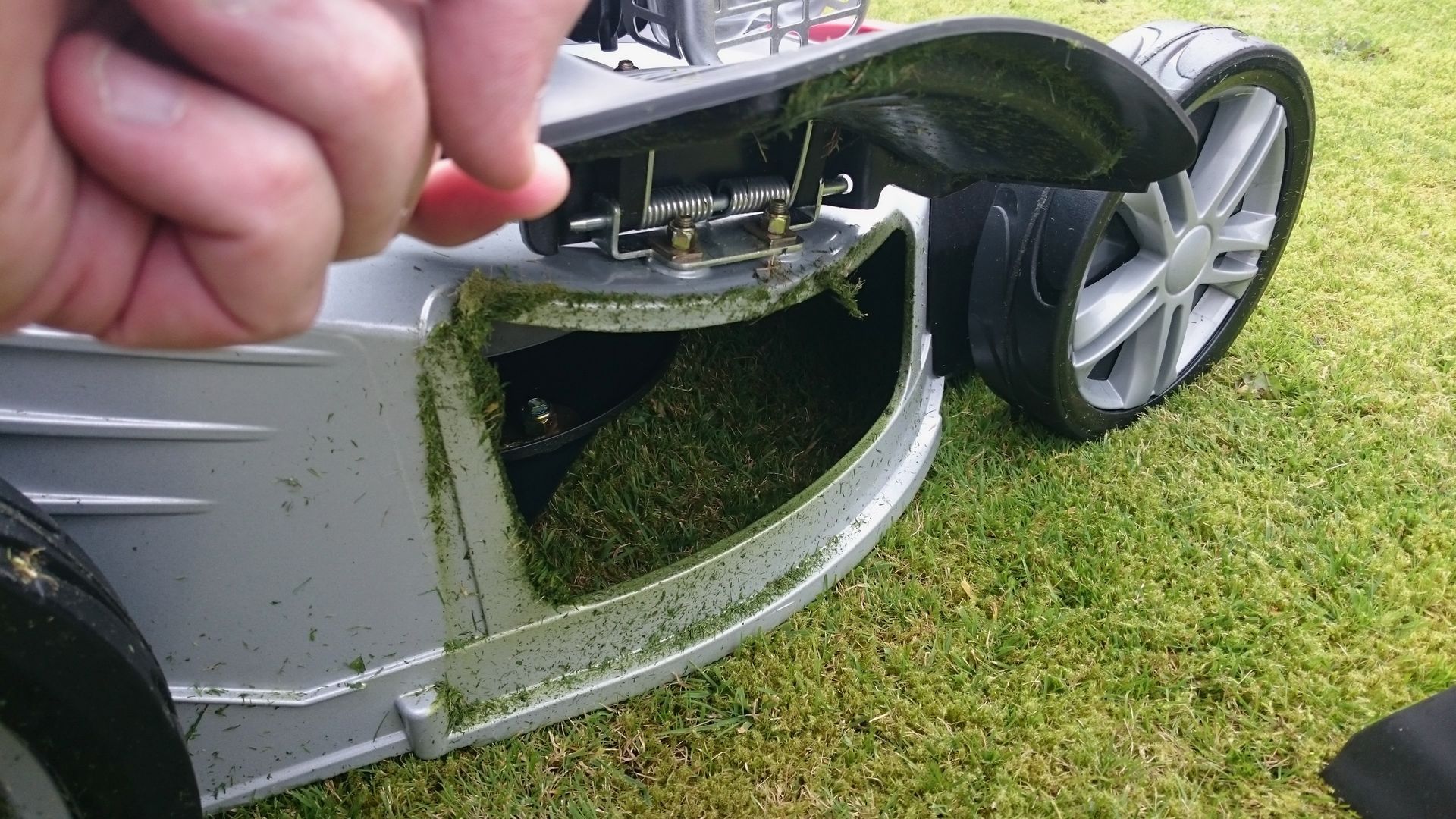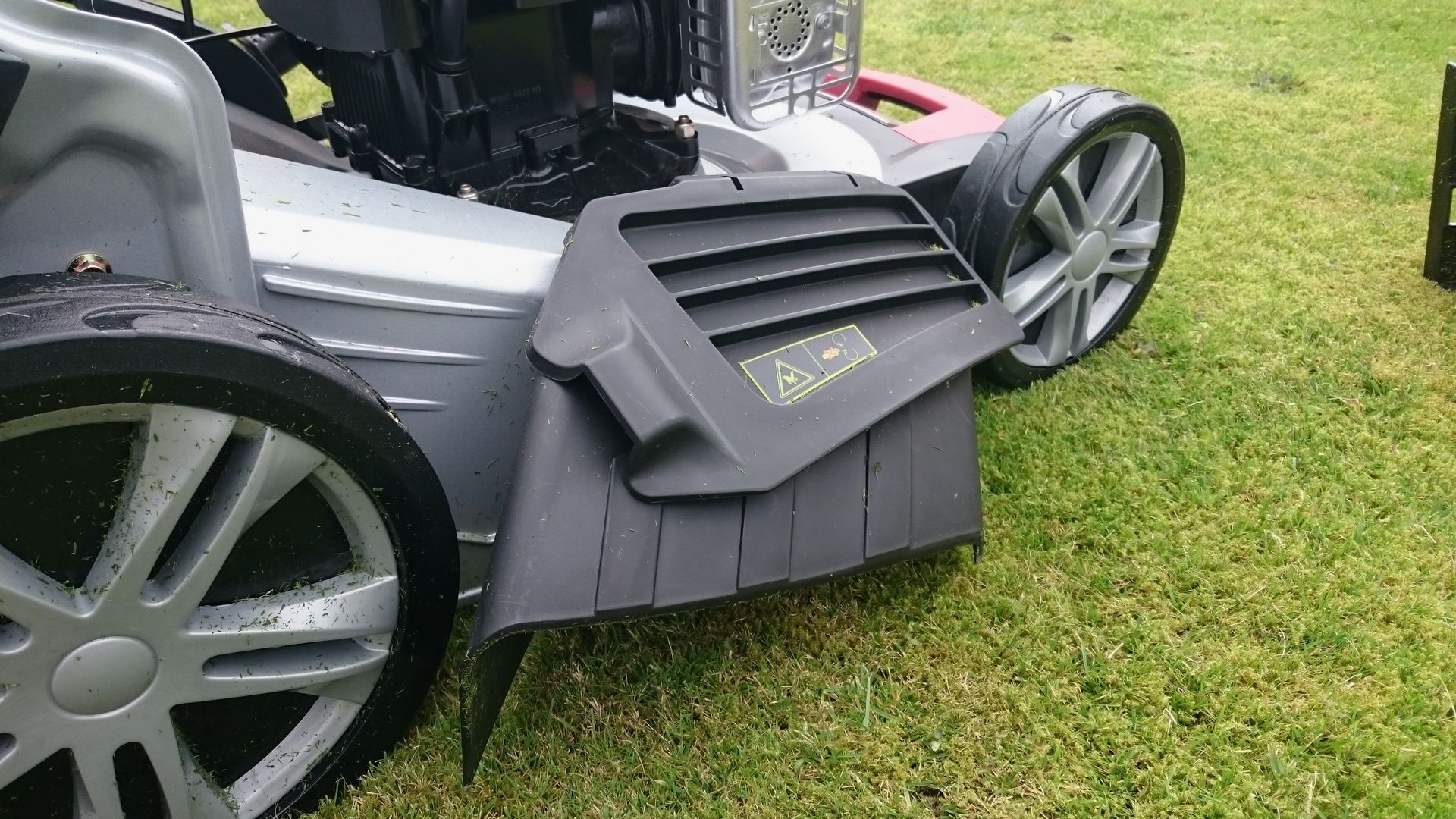*Important Information: As an audience supported website, if you purchase an item after clicking an external link or advertisement marked with an asterisk (*) on this website, we may receive a commission. This does not change the price you pay.
This Chinese manufactured World machine, features rear discharge, side-discharge, collection and mulching options. Image Credit: Author
Collection, Discharge & Mulching
Once grass has been cut… then what? Well, dependent upon your choice of mower, you may be able to collect it in a grass bag or box, return it to the sward as a fine powder by mulching it, or discharge clippings straight to the lawn.
Some lawnmowers combine more than one option and are frequently described as ‘Two in One’, ‘Three in One’, or ‘Four in One’ mowers, dependent upon the number of functions offered by the machine.
This World brand machine, features rear discharge, side-discharge, collection and mulching options in a single mower. Image Credit: Author
As the name suggests a collection only lawnmower, simply collects grass in a collector, usually fitted to the rear of the machine. A '2-in-1' mower may combine collection with mulching. A '3-in-1' machine will likely combine collection, mulching, and either side or rear discharge. And a '4-in-1' mower, will combine collection, mulching, side discharge and rear discharge.
In general, when choosing a new mower, you'll almost certainly require a collection option. We'd suggest a mulching capability too, whilst side and rear discharge options can be useful on overgrown lawns and larger areas of grass.
Collection
Mowers generally come equipped with either a grass bag or a grass box. Functionally, both perform the same task — collecting clippings — but there are subtle differences between the two:
- A rigid grass box, typically made of durable plastic, tends to be more robust over time and will prove significantly easier to clean;
- A fabric grass bag, while often lighter and more flexible for storage, may wear out more quickly and can be more difficult to clean.
Another key factor to consider is
capacity. Opting for a mower with a larger grass collector can reduce the number of stops needed to empty clippings, which helps reduce cut time. Prior to purchase, it’s also worth physically inspecting how easily the collector mounts and dismounts. Some machines incorporate collectors that can be lifted through the mower's handles — a feature that simplifies the emptying process.
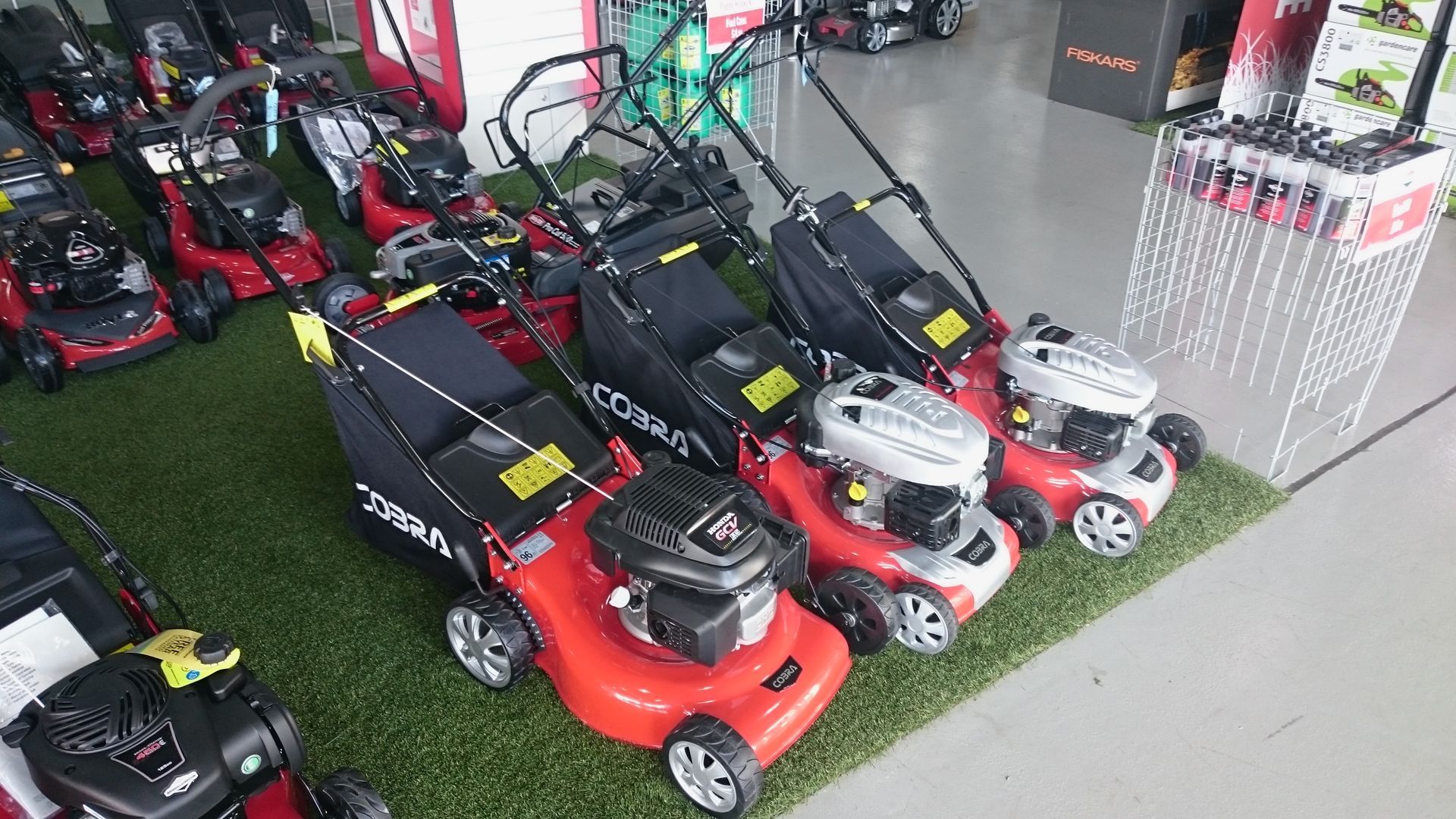
These Cobra lawnmowers, feature a fabric grass bag to store clippings, which usefully can be lifted through the machine's handles. Image Credit: Author
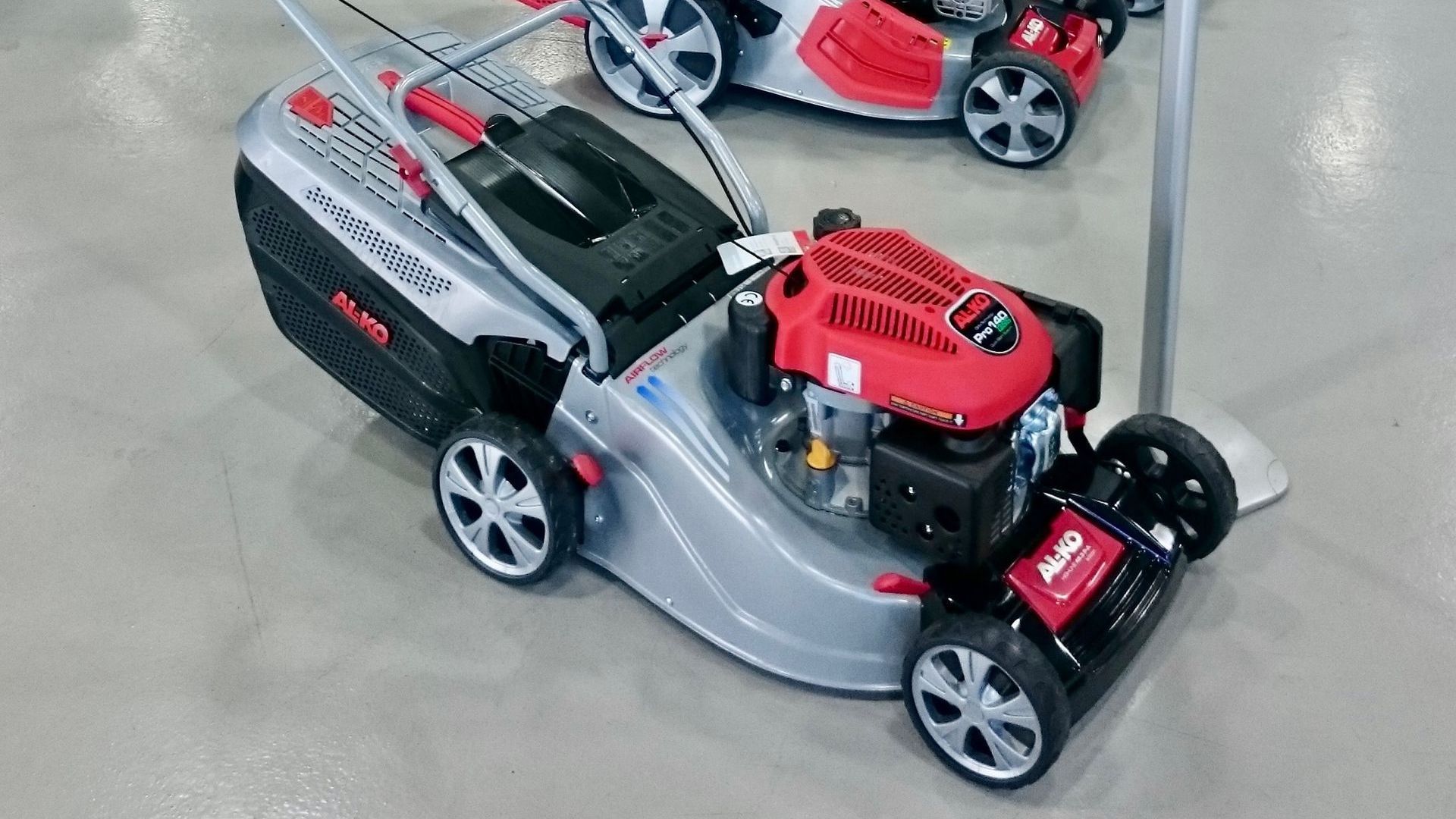
This AL-KO Highline machine features a rigid grass box for collection.
Image Credit: Author
Mulching: Smarter Mowing For A Healthier Lawn
Mulching is a process in which grass clippings are finely shredded and redistributed back into the turf, rather than being collected. After the initial cut, clippings are deflected back into the blade where they are re-cut into a fine powder, which is then deposited onto the lawn surface. By eliminating the need to stop and empty a grass collector, mulching can reduce mowing time by up to 30%.
However, the advantages of mulching extend far beyond time savings. Those microscopic clippings rapidly break down, returning vital nutrients such as nitrogen, potassium (potash), phosphates, calcium, and iron, back into the soil. This natural recycling process improves soil structure, boosts microbial activity, and enhances moisture retention — leading to a denser, greener, lusher, and more resilient lawn with reduced moss growth.
Why Mulching Just Makes Sense
- Time-efficient: No collection, no emptying — just continuous mowing;
- Eco-friendly: Minimises garden waste and reduces the need for lawn treatments and chemicals;
- Nutrient-rich: Naturally feeds the lawn, reducing the need for fertiliser;
- Healthier turf: Promotes thicker growth, improves drought resistance, and reduces moss.
Whether you're maintaining a formal lawn or a family garden, a mower with mulching capability can transform garden waste into a valuable resource, delivering long-term benefits for both your lawn and the environment.
How Mulching Works
To effectively mulch grass clippings, you’ll need a mower specifically designed with an inbuilt mulching capability.
Some machines are dedicated mulching mowers, built to mulch and without a grass collection option. Others provide a mulching option alongside collection and / or discharge options. This allows you to switch between collection and mulching modes, simply by inserting or removing a mulch plug into the rear discharge chute. Usually made from plastic, the mulch plug plays a critical role: it blocks the discharge path to the grass collector, redirecting the clippings back into the mower deck. There, the clippings are repeatedly cut by the mower's blade, until they're reduced to fine particles, which are dispersed onto the lawn.
Optimising Your Mulching Performance
Mulching works best when grass is short and dry. The key is to mow little and often — removing no more than a third of the grass height at any one time. This ensures the clippings are fine enough to decompose rapidly and won’t smother the turf. While mulching offers numerous benefits, timing and context is crucial:
- Avoid mulching during early spring and late autumn, when growth is slow, and moisture levels can lead to clumping;
- Refrain from mulching after applying lawn treatments and dressings, as the finely chopped clippings may interfere with product absorption;
- Target two cuts per week, during the height of the growing season.
By selecting the right mower, and timing your cuts, mulching becomes an effortless and sustainable lawn care strategy — enhancing turf health, saving time, saving money, and reducing waste.
Side Discharge
Side discharge is one of the fastest mowing methods available. With no need for a grass collector and no mulching, clippings are expelled immediately — allowing for continuous forward motion, with fewer interruptions. Side discharge is especially effective for:
- Tackling tall or wet grass that could potentially clog a collector or cutting deck;
- Cutting larger lawns or areas of denser grass quickly, where appearance is less of a priority.
While side discharge enhances cut efficiency, it does comes with some notable downsides:
- Expelled grass will accumulate on the lawn surface: You’ll need to either rake it manually, which can be time-consuming, or leave it to decompose — which may look untidy, and can potentially smother the turf;
- Debris projection: Clippings — and any loose material like stones, sticks, bark, or other garden debris — are ejected at high speed. This presents a potential hazard to people, animals, vehicles, and buildings, in close proximity to the mower.
In summary, side discharge is ideal for high-speed mowing in less formal spaces or when cutting taller, unmanaged areas of grass. However, it’s best reserved for areas where
appearance is not a priority.
Rear Discharge
Choosing a rear discharge option, will see clippings expelled from the rear of the machine. Just like when cutting with a side discharge chute, choosing rear discharge will result in a quicker cut. But unlike choosing side discharge, you'll be obliged to walk through the clippings. Using a rear discharge function is ideal for:
- The maintenance of larger areas of grass where a pristine finish isn’t critical;
- Cutting long or wet grass, where collection may be inefficient or impractical;
- Users who prioritise speed and simplicity over lawn appearance.
In summary, rear discharge allows you to cut more grass in less time — but with the trade-off of walking through your clippings and potentially more cleaning up. It's ideal for functional, high-volume mowing where speed matters more than finish, but tends to be used only infrequently in a domestic context. Indeed, the author's mower has a rear discharge function, which has never been used in the eight years he has owned it.
Summary
Today, most British gardeners simply collect clippings, before placing them either on the compost heap, or in the garden waste bin. Yet by failing to mulch, they’re missing a trick. Mulching doesn’t just reduce cut time, but provides real and meaningful benefits to the lawn – returning essential moisture and valuable nutrients, for a healthier, lusher and more vibrant lawn.
With the exception of large lawns, and areas of overgrown grass, rear and side discharge options are rarely used in domestic lawn care. So, unless you’ve a larger lawn, or a specific requirement for these options, they’ll likely prove far from essential. Instead, when choosing a mower, we’d recommend prioritising mulching capability, and grass bag capacity.

